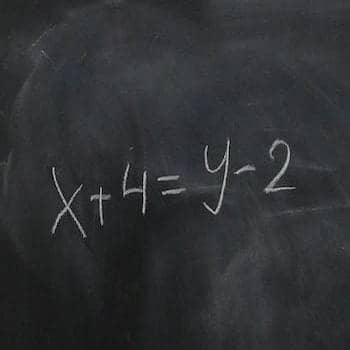Podcast: Download
Subscribe: Apple Podcasts | RSS

Episode Note:
The book I mentioned is available under the title, How to Learn and Memorize Math, Numbers, Equations and Simple Arithmetic for Kindle.
If you prefer video courses, please check out the premium version of this book in video course format.
I want to thank you kindly for visiting and look back to this page soon for a full discussion of the episode, the Method of Loci, mnemonics, creating a Memory Palace network and more topics related to memorizing math.
All that said, here is the correspondence I received as referred to in this episode of the podcast:
Hi Anthony,
I have a question I would like to ask. Using mnemonics what have you committed to memory?
I’m interested in using mnemonics to educate myself, to learn and be able to remember a vast sum of knowledge, that I find enjoyable, and I find it inspirational to hear, what others have achieved using such techniques.
Kind regards.
This is a great question, and answering it helps me describe just how versatile the Magnetic Memory Method – and mnemonics in general – happen to be.
Over the years I have memorized a wide variety of information types.
This TEDx Talk is perhaps the most memorable:
Here’s a tutorial on how to memorize a speech or presentation yourself if you’re interested in that skill.
I’ve also used memory techniques to learn:
* Foreign language vocabulary in a variety of languages including a bunch of Chinese characters
* Musical notation like the bass clef, key signatures and the Circle of Fifths
* Dates and facts
* Seat numbers on airplanes and trains
* Poetry
* Famous quotes
* Randomized decks of cards
* To-do lists (which as Derren Brown points out, Memory Palace to-do items are for more likely to get done)
* Philosophical concepts
* Street and city names
* Addresses
* Phone numbers
* Film and book titles
* Recipes
* Call numbers at the library
* Appointment times
* The steps involved in learning something new
* … and I’m sure there’s much more.
For me, the ultimate trick has always been to use locations (spatial memory). Some people toss their visual associations “into the void” of their minds without locating them some place.
And for some people, that’s just fine.
But I’m an advocate for localized organization.
Why? I’ve talked about this a lot before in other editions of the Magnetic Memory newsletter, the key idea being that we have an unconscious fear of losing things (objects, certainly, but especially losing our minds).
Thus, when we create a visual image to help us remember something and then stick it in a clearly visualized mental location based on a familiar location, we eliminate the fear and anxiety we naturally have a losing things and can focus on embedding that information instead.
Just a theory?
Perhaps.
But theory is irrelevant when it comes to real life applications of these techniques.
This stuff works.
And there’s science behind it too. And incredible teachers of memory like Barbara Oakley of Learning How to Learn who also stick to the science.
Anyone who knows me knows that I have very limited patience for anything that can’t be empirically demonstrated in front of a council of disinterested men and women in lab coats.
That’s just the way my Magnets roll.
Further Resources:
In Praise of the Mnemonic Peg System
How to Memorize Numbers with the Major Method



